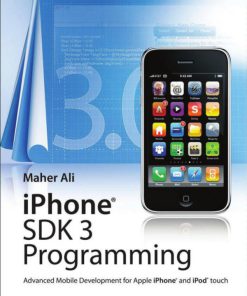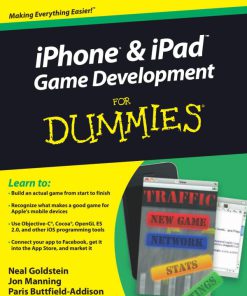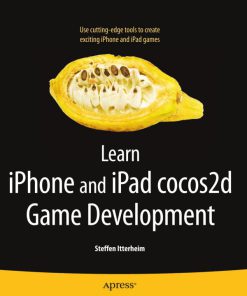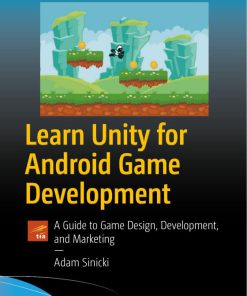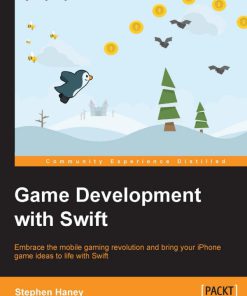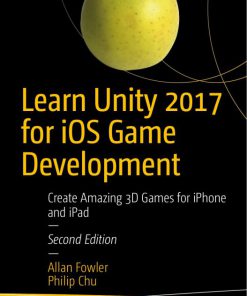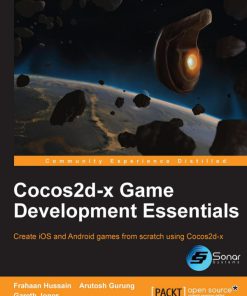Learn Iphone and Ipad Cocos2d Game Development 1st Edition by Steffen Itterheim ISBN 9781430233046 1430233044
$50.00 Original price was: $50.00.$25.00Current price is: $25.00.
Authors:Steffen Itterheim , Series:Gaming [108] , Author sort:Itterheim, Steffen , Languages:Languages:eng , Published:Published:Nov 2010 , Publisher:Apress
Learn Iphone and Ipad Cocos2d Game Development 1st Edition by Steffen Itterheim – Ebook PDF Instant Download/Delivery. 9781430233046 ,1430233044
Full download Learn Iphone and Ipad Cocos2d Game Development 1st Edition after payment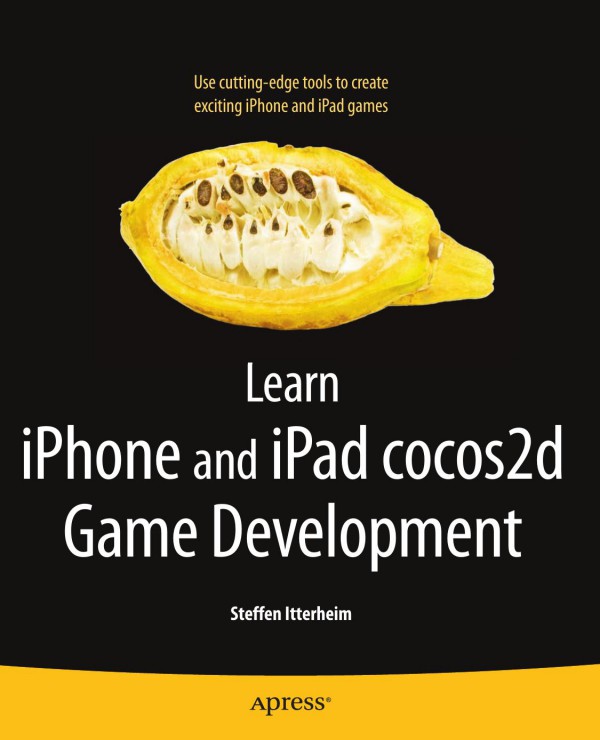
Product details:
ISBN 10: 1430233044
ISBN 13: 9781430233046
Author: Steffen Itterheim
Learn Iphone and Ipad Cocos2d Game Development 1st Edition Table of contents:
Chapter 1 Introduction
Why Use cocos2d for iPhone?
It’s Free
It’s Open Source
It’s Objective, See?
It’s 2D
It’s Got Physics
It’s Less Technical
It’s Still Programming
It’s Got a Great Community
Important cocos2d Tidbits
Section 3.3.1
Porting to Other Platforms
This Book Is for You
Prerequisites
Programming Experience
Objective-C
What You Will Learn
What Beginning iOS Game Developers Will Learn
What iPhone App Developers Will Learn
What Cocos2d Developers Will Learn
What’s in This Book
Questions & Feedback
Chapter 2 Getting Started
What You Need to Get Started
System Requirements
Register as iOS Developer
Certificates & Provisioning Profiles
Download & Install the iPhone SDK
Download & Install cocos2d
Install cocos2d Xcode Project Templates
Create a cocos2d Application
The HelloWorld Application
Locating the HelloWorld files
Resources
Other Sources
Main.m
Precompiled Prefix Header
Classes
HelloWorldAppDelegate
Device Orientation
Animation Interval
Display FPS
HelloWorldScene
Memory Management with cocos2d
Changing the World
What Else You Should Know
The iOS Devices
About Memory Usage
The Simulator
Can’t Assess Performance
Can’t Assess Memory Usage
Can’t Use All iOS Device Features
Runtime Behavior Can Differ
About Logging
Conclusion
Chapter 3 Essentials
Singletons in cocos2d
The Director
The Scene Graph
The CCNode Class Hierarchy
CCNode
Working with Nodes
Working with Actions
Scheduled Messages
Scenes and Layers
CCScene
Scenes and Memory
Pushing and Popping Scenes
CCTransitionScene
CCLayer
Receiving Touch Events
Receiving Accelerometer Events
CCSprite
Anchor Points Demystified
Texture Dimensions
CCLabel
Menus
Actions
Repeating Actions
Ease Actions
Action Sequences
Instant Actions
Cocos2d Test Cases
Conclusion
Chapter 4 Your First Game
Step-By-Step Project Setup
Adding the Player Sprite
Accelerometer Input
First Test Run
Player Velocity
Adding Obstacles
Collision Detection
Score Label
Introducing CCBitmapFontAtlas and Hiero
Adding Audio
Porting to iPad
Conclusion
Chapter 5 Game Building Blocks
Working with Multiple Scenes
Adding More Scenes
Loading Next Paragraph, Please Stand By
Working with Multiple Layers
How to Best Implement Levels
Scenes as Levels
Layers as Levels
CCColorLayer
Subclassing Game Objects from CCSprite
Composing Game Objects using CCSprite
Curiously Cool CCNode Classes
CCProgressTimer
CCParallaxNode
CCRibbon
CCMotionStreak
Conclusion
Chapter 6 Sprites In-Depth
CCSpriteBatchNode
When to Use the CCSpriteBatchNode
Demo Projects
A Common and Fatal Mistake
Bullets Without a SpriteBatch
Introducing the CCSpriteBatchNode
Optimizations
Sprite Animations the Hard Way
Animation Helper Category
Working with Texture Atlases
What Is a Texture Atlas?
Introducing Zwoptex
Creating a Texture Atlas with Zwoptex Desktop
Using the Texture Atlas with Cocos2d
Updating the CCAnimation Helper Category
All into One and One for All
Do It Yourself
Conclusion
Chapter 7 Scrolling with Joy
Advanced Parallax Scrolling
Creating the Background As Stripes
Re-creating the Background in Code
Moving the ParallaxBackground
Parallax Speed Factors
Scrolling to Infinity and Beyond
Fixing the Flicker
Repeat, repeat, repeat
A Virtual Joypad
Introducing SneakyInput
Integrating SneakyInput
Touch Button to Shoot
Skinning the Button
Controlling the Action
Digital Controls
An Alternative: GPJoystick
Conclusion
Chapter 8 Shoot ’em Up
Adding the BulletCache Class
What about Enemies?
The Entity Class Hierarchy
The EnemyEntity Class
The EnemyCache Class
The Component Classes
Shooting Things
A Healthbar for the Boss
Conclusion
Chapter 9 Particle Effects
Example Particle Effects
Creating a Particle Effect the Hard Way
Variance Properties
Number of Particles
Emitter Duration
Emitter Modes
Emitter Mode: Gravity
Emitter Mode: Radius
Particle Position
Particle Size
Particle Direction
Particle Lifetime
Particle Color
Particle Blend Mode
Particle Texture
Introducing the Particle Designer
Using Particle Designer Effects
Sharing Particle Effects
Shoot ’em Up with Particle Effects
Conclusion
Chapter 10 Working with Tilemaps
What Is a Tilemap?
Preparing Images with Zwoptex
Tiled Map Editor
Creating a New Tilemap
Designing a Tilemap
Using Orthogonal Tilemaps with Cocos2d
Locating Touched Tiles
An Exercise in Optimization and Readability
Working with the Object Layer
Drawing the Object Layer Rectangles
Scrolling the Tilemap
Conclusion
Chapter 11 Isometric Tilemaps
Designing Isometric Tile Graphics
Isometric Tilemap Editing with Tiled
Creating a New Isometric Tilemap
Creating a New Isometric Tileset
Laying Down Some Ground Rules
Isometric Game Programming
Loading the Isometric Tilemap in Cocos2d
Setup Cocos2d for Isometric Tilemaps
Locating an Isometric Tile
Scrolling the Isometric Tilemap
This World Deserves a Better End
Adding a Movable Player Character
Enabling the Player to Move Behind Tiles
Moving the Player, Tile by Tile
Stop Player on Collisions
Adding More Content to the Game
Conclusion
Chapter 12 Physics Engines
Basic Concepts of Physics Engines
Limitations of Physics Engines
The Showdown: Box2D vs. Chipmunk
Box2D
The World According to Box2D
Restricting Movement to the Screen
Converting Points
Adding Boxes to the Box2D World
Connecting Sprites with Bodies
Collision Detection
Joint Venture
Chipmunk
Objectified Chipmunk
Chipmunks in Space
Boxing-In the Boxes
Adding Ticky-Tacky Little Boxes
Updating the Boxes’ Sprites
A Chipmunk Collision Course
Joints for Chipmunks
Conclusion
Chapter 13 Pinball Game
Shapes: Convex and Counterclockwise
Working with VertexHelper
Creating the Pinball Table
Box2D Debug Drawing
Adding Dynamic Elements
The BodyNode Class
The Ball
Creating the Ball (Again)
Forcing the Ball to Move
The Bumpers
The Plunger
Launching the Ball on Contact
The Flippers
Conclusion
Chapter 14 Game Center
Enabling Game Center
Creating Your App in iTunes Connect
Setting Up Leaderboards and Achievements
Creating a Cocos2d Xcode Project
Configuring the Xcode Project
Summary
Game Kit Programming
The GameKitHelper Delegate
Checking for Game Center Availability
Authenticating the Local Player
Block Objects
Receiving the Local Player’s Friend List
Leaderboards
Achievements
Matchmaking
Conclusion
Chapter 15 Out of the Ordinary
Useful Technologies
Social Networks
Socket Server Technology
Ads and Analytics
Push Notification Providers
Source Code Projects to Benefit From
Sapus Tongue Source Code
LevelSVG
The iPhone RPG Game Kit
Line-Drawing Game Starterkit
For Your Reference
Working with Publishers
Finding Freelancers
Finding Free Art and Audio
Finding the Tools of the Trade
Marketing
Marketing Your Game and Your Self
Public Relations and Press Releases
Where to Find Help
Cocos2d Home Page
Stack Exchange Network
Tutorials and FAQs
Famous Last Words
Conclusion
Index
People also search for Learn Iphone and Ipad Cocos2d Game Development 1st Edition:
learn to code iphone apps
apple ipad course
apple learn to code 1
brain games ipad free




